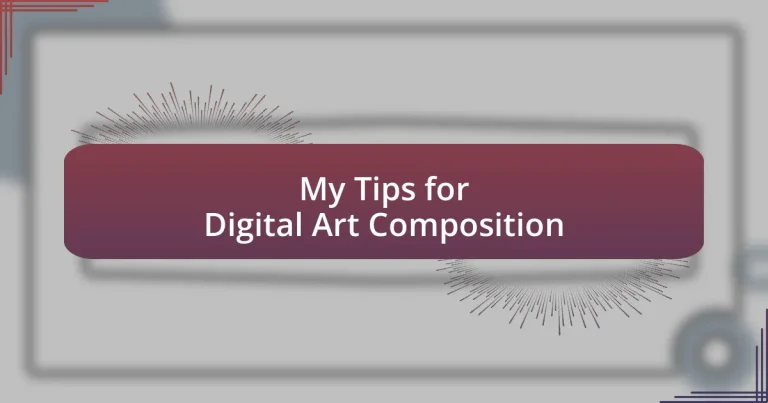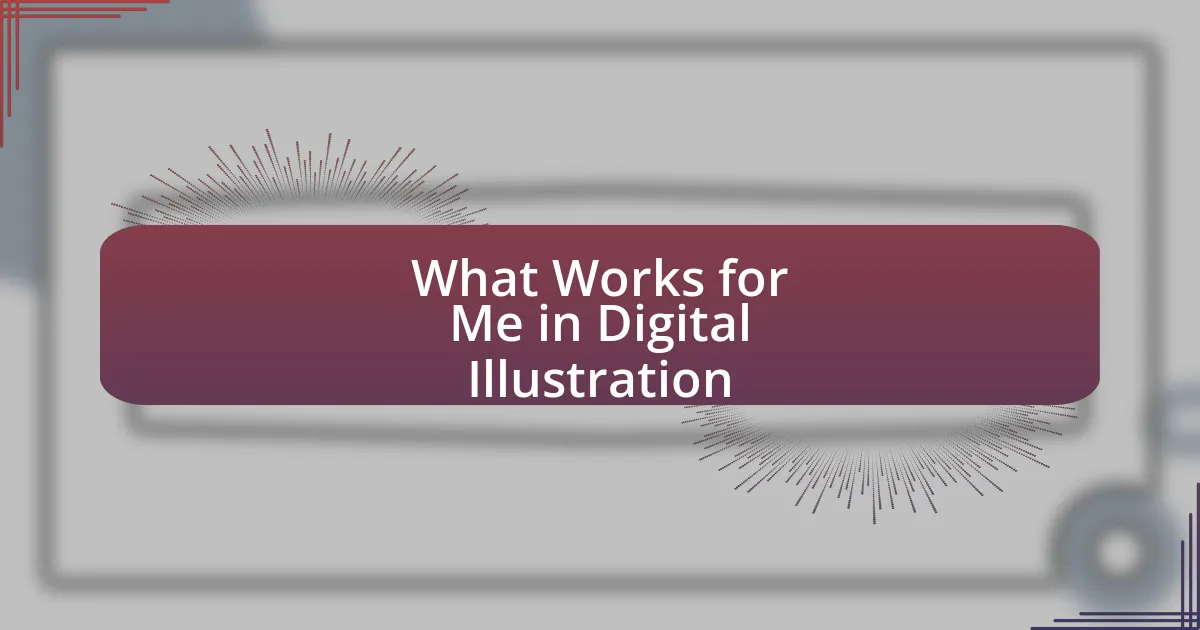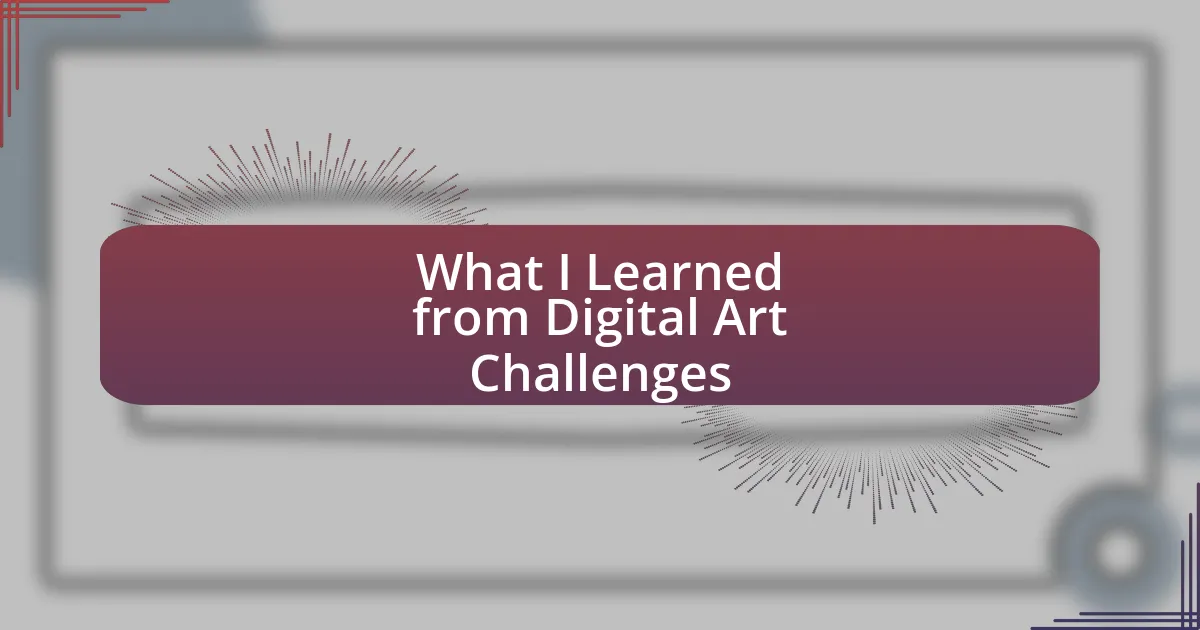Key takeaways:
- Composition is vital in digital art, influencing how elements convey narrative and engage viewers.
- Key principles include contrast, leading lines, and unity, which enhance visual interest and storytelling.
- Effective use of color and space can significantly impact emotional resonance and viewer experience.
- Finalizing compositions with attention to details like light, shadow, and texture can elevate the overall artwork.
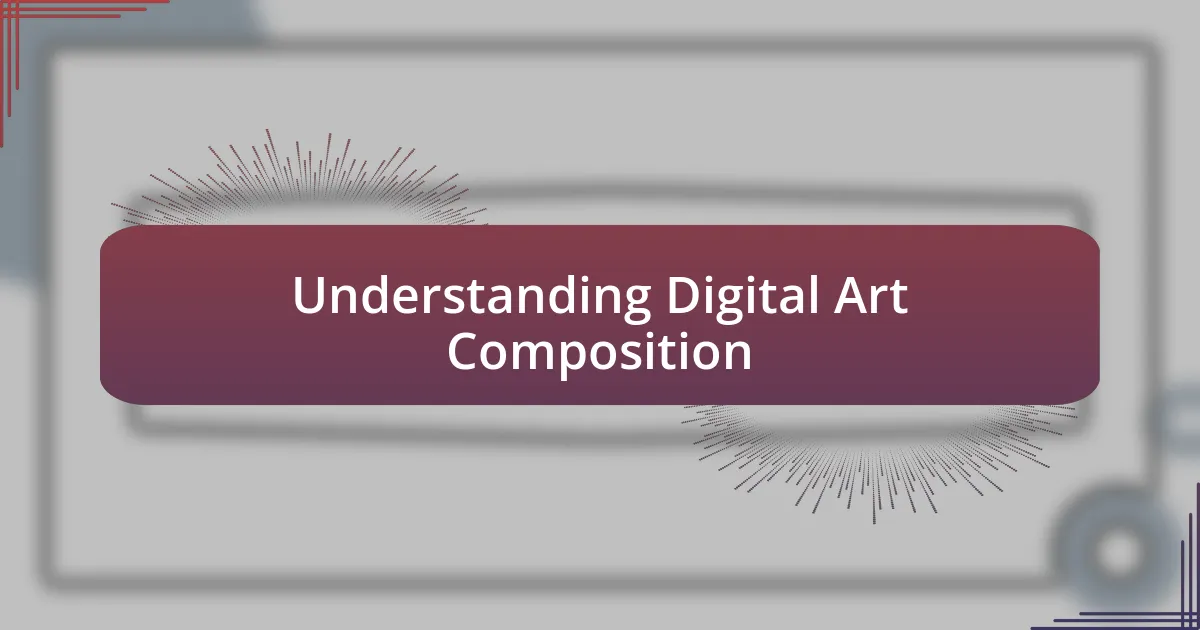
Understanding Digital Art Composition
When I first started exploring digital art composition, I discovered how crucial the arrangement of elements is to conveying a narrative. Have you ever looked at a piece of art and felt instantly drawn in, while another just felt flat? That’s all about composition—the way shapes, colors, and textures interact to create a cohesive whole.
I remember experimenting with the rule of thirds early in my journey. It felt almost magical to see how simply shifting the focal point could elevate my work from ordinary to extraordinary. In digital art, this rule encourages you to place points of interest off-center, creating a more engaging visual flow that guides the viewer’s eye.
Understanding the balance of elements can feel daunting, but it’s essential for achieving harmony in your artwork. Think about it: how does your eye move across a painting? I often find myself reflecting on this as I create, as achieving a sense of equilibrium can transform a chaotic image into something breathtaking. There’s something incredibly fulfilling about mastering these principles—it’s like having the key to unlock your own artistic voice.
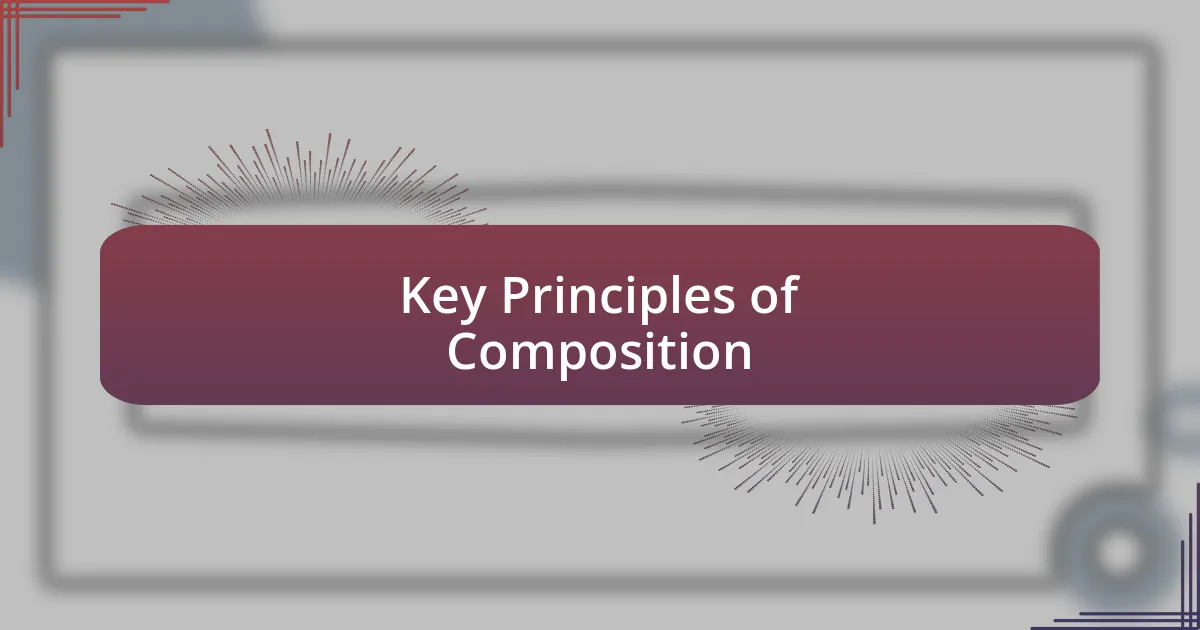
Key Principles of Composition
Understanding the key principles of composition can completely transform your digital art. One principle that stands out to me is the importance of contrast. I vividly remember a time when I added a dark background to a vibrant subject. The colors popped in a way I hadn’t anticipated, breathing life into my artwork and elevating its overall impact. This contrast created a dynamic tension, allowing different elements to communicate effectively with each other.
Another vital aspect is the use of leading lines. I’ve often found myself fascinated by how lines can guide a viewer’s gaze through an artwork. For instance, in one piece, I incorporated a winding road that drew the viewer’s eyes towards the horizon. This technique not only added depth but effectively told a story. It’s amazing how something as simple as a line can create movement and guide a narrative.
Lastly, I can’t emphasize enough the role of unity in composition. I recall a challenging project where the colors and shapes initially felt disjointed. After experimenting with a consistent color palette, the artwork finally came together cohesively. This sense of unity not only enhances the aesthetic but also evokes emotions that resonate deeply with the viewer. The journey of refining these elements in my work has been incredibly rewarding, and I hope you find joy in exploring these principles as well.
| Principle | Description |
|---|---|
| Contrast | Creating differences between elements to enhance visual interest. |
| Leading Lines | Using lines to guide the viewer’s eye through the composition. |
| Unity | Ensuring all elements work together to create a harmonious whole. |
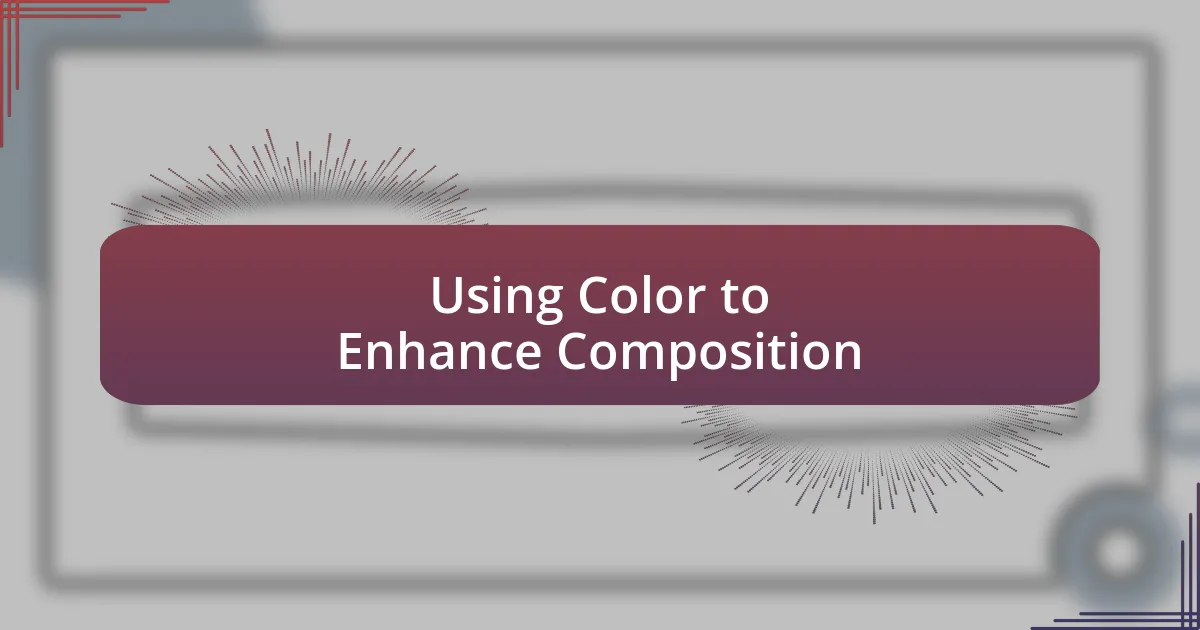
Using Color to Enhance Composition
Color is a powerful tool in digital art, and its effective use can significantly enhance your composition. I still remember a digital painting where I experimented with a complementary color scheme. By placing warm colors next to cool ones, I achieved a visual tension that not only drew in the viewer but also created a mood of contrast and excitement. This experience solidified my belief that understanding color relationships can truly elevate the emotional impact of your work.
When selecting colors, consider the following strategies to enhance your composition:
- Complementary Colors: Use colors opposite each other on the color wheel to create vibrancy and dynamic visual interest.
- Analogous Colors: Choose colors that are next to each other on the wheel for a harmonious and calming effect.
- Monochromatic Scheme: Variations of a single color can yield depth and unity, which can be particularly effective in establishing a cohesive mood.
- Color Temperature: Warm colors tend to advance, while cool colors recede, helping to create depth and emphasis in your artwork.
- Emotional Associations: Different colors evoke various emotions. For example, red can convey passion or urgency, while blue often induces calmness. Keeping this in mind can guide your composition’s emotional narrative.
Each time I apply these strategies, I feel a deeper connection to my art, as if I’m not just choosing colors but telling a more profound story through my palette.
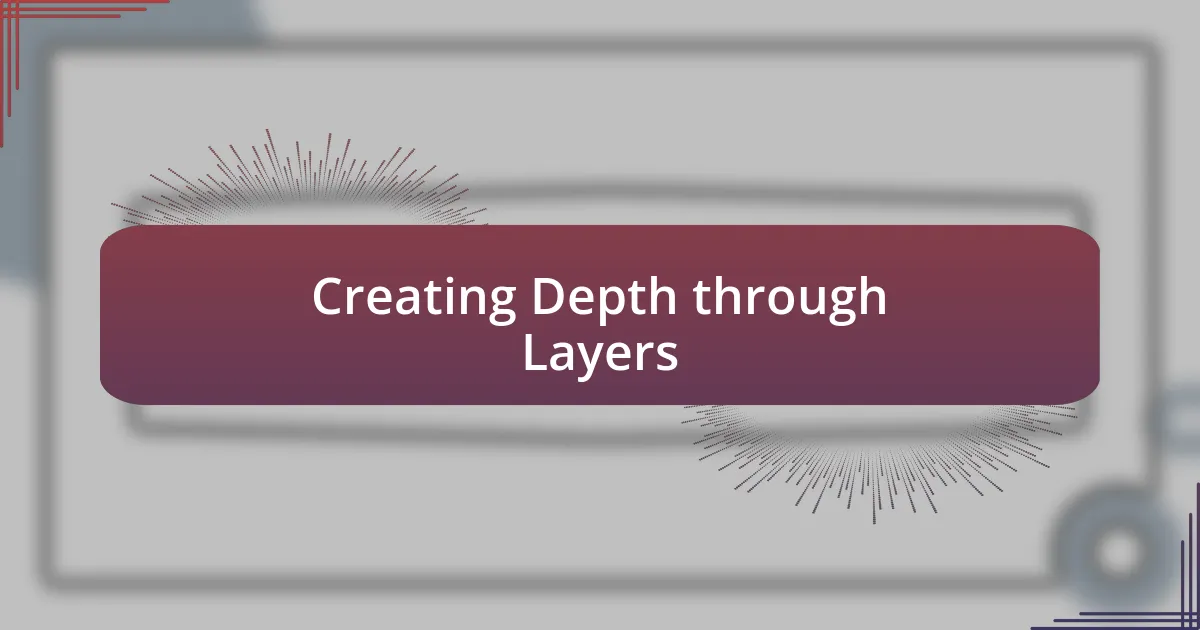
Creating Depth through Layers
Creating depth in your digital artwork can greatly benefit from layering techniques. I vividly recall a piece where I stacked various elements, from foreground details to a hazy background. This method not only added dimension but also drew the viewer’s eye through the scene, making it feel more immersive. Isn’t it fascinating how something as simple as layers can transform a flat image into a vibrant narrative?
When I approach layering, I often think about the spatial relationships between objects. For instance, placing a transparent layer of texture over a background can create a sense of atmosphere—like fog rolling in. I once added a soft gradient beneath my main subject, which helped to anchor it in the composition, making the whole piece feel more cohesive. Have you ever noticed how a well-placed shadow or highlight can change your perception of depth? It’s those small details that can make a significant impact.
Finally, don’t forget to consider transparency and blending modes. I’ve experimented with these features to further unite elements within my artwork. For example, when I desaturated a layer with a low opacity, it allowed the colors beneath it to show through, adding complexity without overwhelming the viewer. This interplay of visibility can make your art feel alive. How do you feel when you see layers interact in a painting? For me, it brings a sense of wonder and depth that keeps viewers engaged.
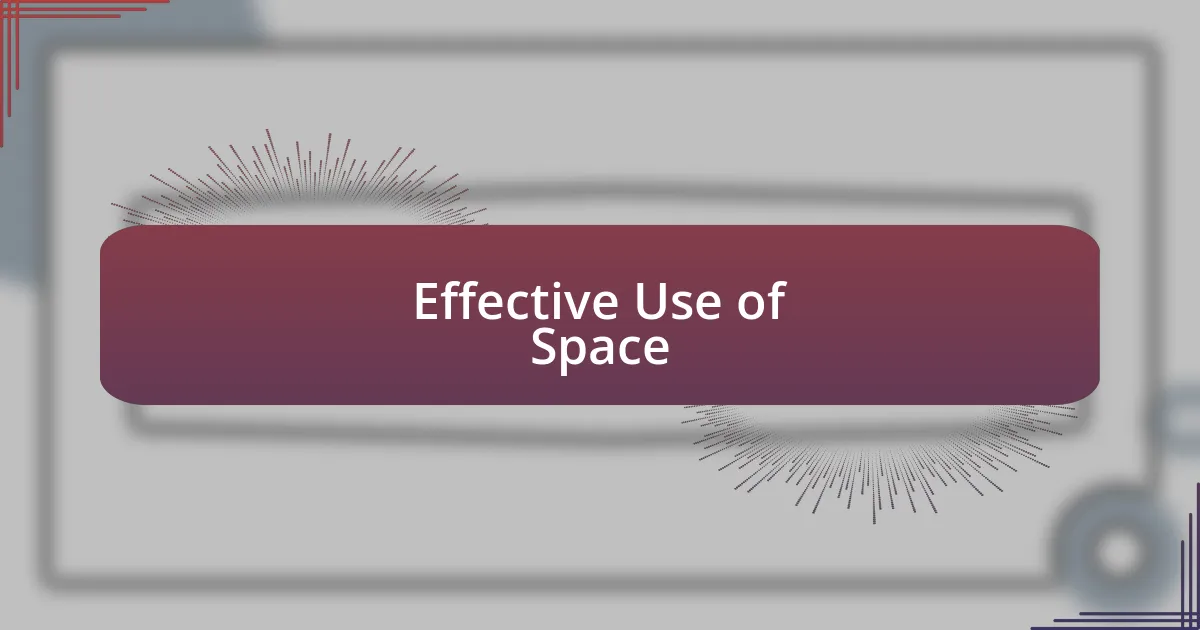
Effective Use of Space
Effective Use of Space
In my experience, the way space is utilized in digital art can dramatically impact the viewer’s experience. I remember one piece where I intentionally left large areas of negative space around a focal point, which made the subject feel more prominent and allowed the viewer’s eye to rest. Isn’t it interesting how sometimes, less is indeed more? The empty spaces can invoke emotions of serenity or solitude, enhancing the overall message of the artwork.
When I think about composition, I often consider the balance between filled and empty areas. In a recent illustration, I experimented with asymmetrical balance, where one side was densely packed with details while the other was quite sparse. This unexpected contrast drew attention to the intricacies of the busy side, while the open space gave the artwork room to breathe. Have you ever tried playing with the weight of your elements? The results can be surprisingly dynamic.
Another technique I’ve found effective is using diagonal lines to lead the eye through the composition. I often sketch out a rough layout before diving into details, ensuring that various elements pull the viewer’s gaze across the canvas. In one project, I used a series of diagonal strokes to guide the eye toward my main character, creating a sense of movement and engagement. Reflecting on your own work, how do you feel when your composition invites exploration? Exploring the pathways of gaze really excites and motivates me.
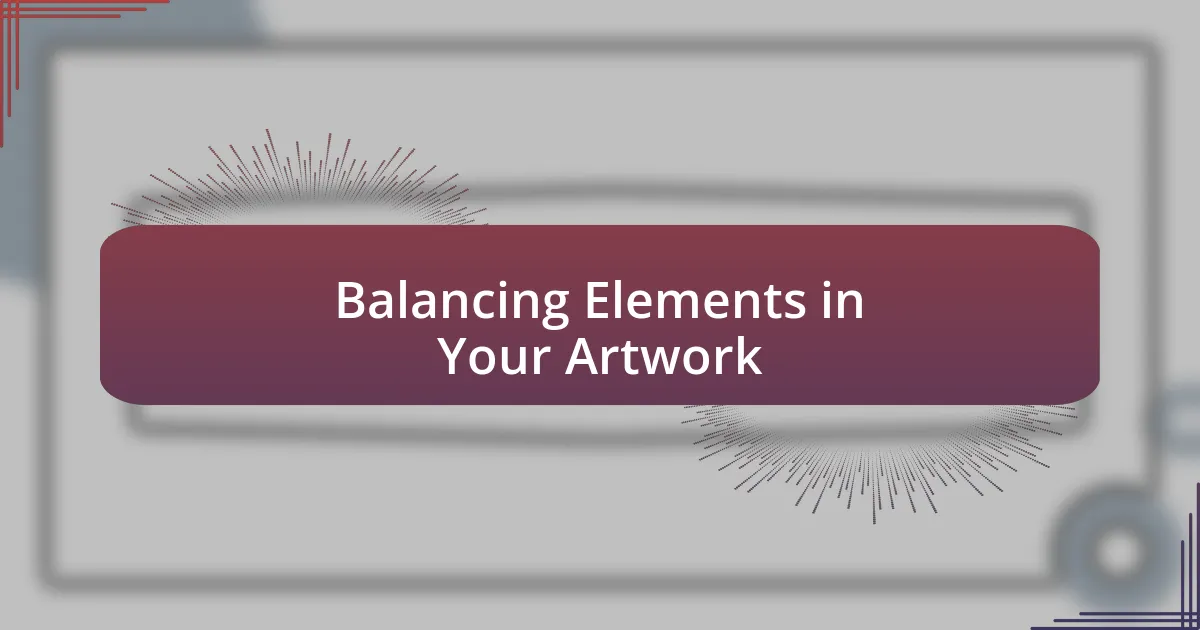
Balancing Elements in Your Artwork
When it comes to balancing elements in artwork, my approach often involves considering the visual weight each component carries. I once created a digital landscape where a massive mountain loomed on one side, balanced by a delicate, swirling river on the other. It’s fascinating how the contrasting forms created a dance of tension, inviting viewers to explore the entire scene. Have you ever thought about how the placement of a single element can shift a viewer’s perspective?
In another piece, I experimented with color contrast to achieve balance. I placed warm tones on one side, eliciting feelings of warmth and excitement, while cool tones on the opposite side brought a sense of calm. This deliberate choice made the composition feel both lively and serene at once. Have you found that color can serve as a balancing force in your art?
Additionally, I often contemplate the emotional resonance of balance in my work. In a portrait I painted, the subjects’ expressions were a crucial part of the equilibrium. By positioning their gazes toward each other, I created an intimate dialogue that drew viewers right into their interaction. Can you feel the difference when elements connect on a more personal level? This interplay can truly transform a piece from just an image into a story waiting to be explored.
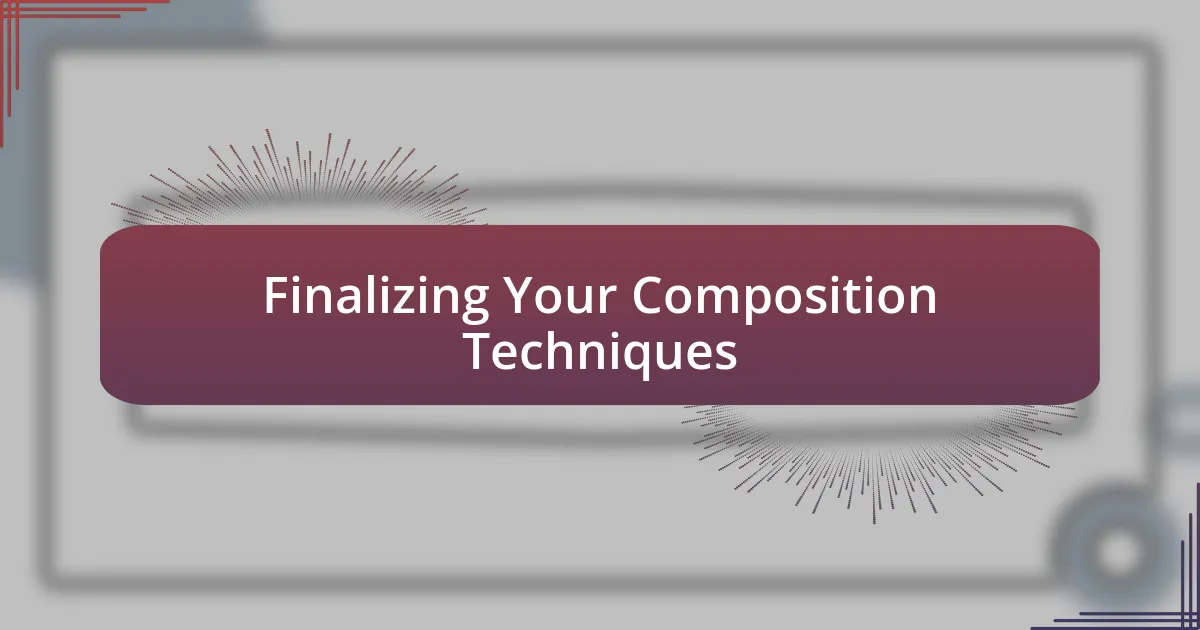
Finalizing Your Composition Techniques
Finalizing your digital art composition is often where the magic happens. I recall a recent project where I spent hours adjusting the contrasts between light and shadow to give depth to the scene. I found that this fine-tuning added an emotional weight to the composition that made the artwork feel alive. Have you ever noticed how those last adjustments can elevate a piece from good to unforgettable?
While working on a piece inspired by a rainy day, I realized the value of stepping back and assessing my work from a distance. Doing this revealed areas that felt stagnant or overcrowded. By simplifying certain elements and enhancing focal points, I felt a renewed sense of clarity and focus. Have you ever taken the time to step away for a moment and let fresh eyes guide your final tweaks?
Another technique I frequently employ is layering textures at the end of the process. I once layered several textures on a vibrant cityscape to mimic the feeling of energy bustling there. This addition not only enriched the visual interest but also resonated with the viewer’s experience. Do you think that adding subtle textures can transform how a piece is perceived?

